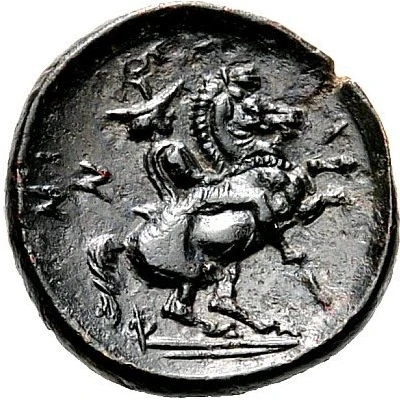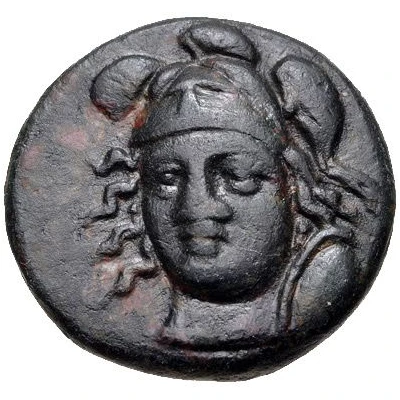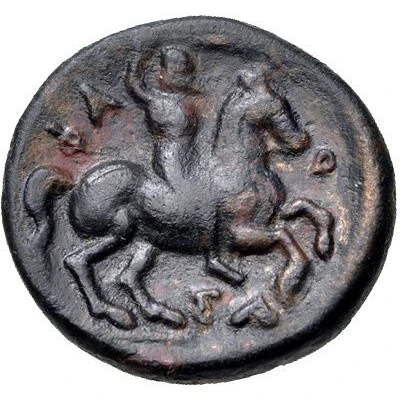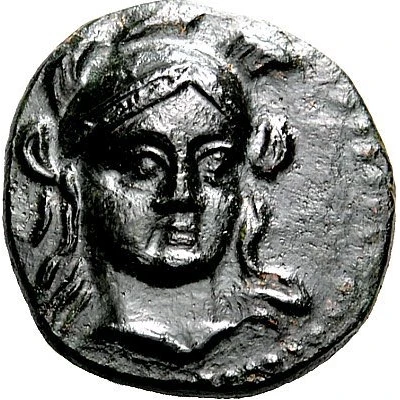
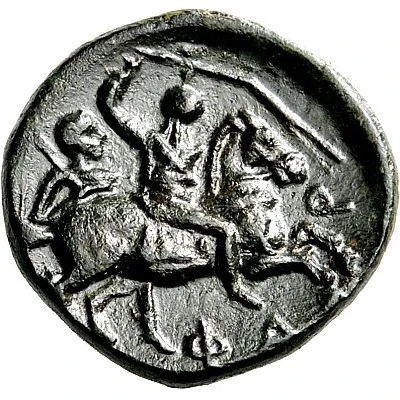

© Nomos AG
Dichalkon 400 BC - 375 BC
| Bronze | 4.58 g | 18.0 mm |
| Issuer | Pharsalos (Thessaly) |
|---|---|
| Type | Standard circulation coin |
| Years | 400 BC - 375 BC |
| Value | Dichalkon (1⁄24) |
| Currency | Drachm |
| Composition | Bronze |
| Weight | 4.58 g |
| Diameter | 18.0 mm |
| Shape | Round (irregular) |
| Technique | Hammered |
| Demonetized | Yes |
| Updated | 2024-10-10 |
| Numista | N#171249 |
|---|---|
| Rarity index | 97% |
Reverse
Armored Thessalian horseman riding right, brandishing flail; behind him, soldier walking right with staff over his shoulder
Script: Greek
Lettering: Φ Α Ρ
Interesting fact
The Dichalkon coin from Pharsalos (Thessaly) is interesting because it features a unique design, with the head of a satyr on one side and a horse on the other. This design was meant to symbolize the connection between the wild, untamed nature of the satyr and the strength and power of the horse, which were both revered in ancient Greek culture. Additionally, the use of bronze in the coin's construction was a significant technological advancement for its time, as it was a durable and versatile material that allowed for the creation of high-quality currency.

